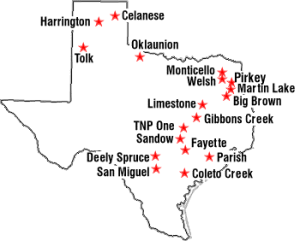EPA's Clean Power Plan to Reduce Climate Change Impacts from Power Plants

Yesterday, EPA administrator Gina McCarthy announced stage two of President Obama’s Climate Action Plan, the Clean Power Plan, which is designed to reduce power plant greenhouse gas pollution and increase energy efficiency. The plan is to create a flexible environment for each state by allowing cooperation between multiple states along with individual state plans to comply with the Clean Power Plan guidelines. The proposal aims to encourage states, companies and private individuals to get involved in the reduction of greenhouse gasses that come from domestic power plants that burn fossil fuels, especially coal. Its flexibility and benefits are what’s going to drive this environmental plan to its final goal.
The plan requires that states have their proposals submitted by June of 2016 and started by 2020, with the goal of reducing carbon emissions 30% below 2005 levels by 2030. In addition to reducing our impact on climate change, the plan is projected have many other benefits as well. It is projected to cut electric bills by 8%, cut particle pollution, nitrogen oxides, and sulfur dioxide by more than 25%, and have tremendous health benefits. This regulation has the potential to prevent 6,600 premature deaths and hundreds of thousands of asthma attacks in children who are all exposed to the toxins coal plants emit into the environment. According to the EPA, a projected increase of 104,000 jobs will be created in power production, fuel extraction and the demand side energy sector, and up to $93 billion in climate and public health benefits could be made by making the changes this plan guides us to do.

Coal plants alone count for one third of all greenhouse gas emissions in the US, with Texas being the largest producer from its 18 coal fired power plants located mostly in east Texas. Currently, there is no restriction on carbon pollution from existing power plants and a steady increase of carbon dioxide atmospheric concentration has gone from 387 parts per million in 2009, to a record 401 parts per million as of April 2014 which, according to ice core records, hasn’t been reached in over 800,000 years. With over 40% of US power generated from coal plants, adjustment of environmental regulations has been needed for a long while.
The goals of the Clean Power Plan are outlined with specific requirements of greenhouse gas emissions that will serve as another step forward towards low-carbon technologies and a cleaner planet. The Clean Power Plan will require a change in each state for the better of the environment, fueling new technologies and businesses that support low carbon economy. By requiring action from the states, the plan will hopefully encourage action from the citizens as well.
In addition to making changes here in the United States, the plan is also hoped to spur greater international action to address climate change. The announcement that the worlds largest carbon emitter, China, will place a cap on carbon emissions in 2016, seems to indicate that the strategy might already be working.
This announcement isn’t the end of the process. EPA is now collecting feedback from the public on this proposal. You can help ensure that this proposed regulation to address the urgent problem of climate change is adopted and put into action as quickly as possible by letting EPA know that you support limited carbon pollution from power plants.